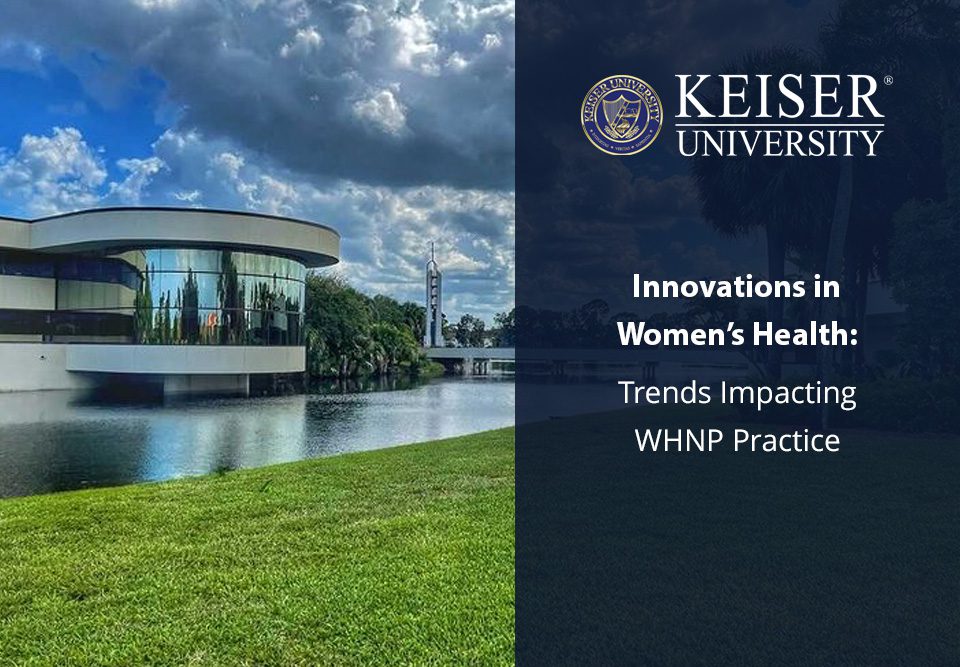Women’s health matters, yet women have long struggled to command the attention or respect they deserve. This begins with recognizing that biological and gender-related concerns have a huge impact on health and wellbeing. From reproductive challenges to systemic biases, many issues determine how women navigate the healthcare system and whether they receive sensitive and high-quality care.
Unfortunately, women have traditionally faced significant barriers in their efforts to achieve optimal physical, mental and emotional health. Research gaps limit even well-meaning providers from fully understanding women’s health issues. These barriers also cause distress for women seeking answers and empathy.
The good news? Things are beginning to change, and in response to cultural shifts and technological opportunities, women’s health is poised to take an exciting step forward. As patients, women are beginning to uncover answers to long-held medical challenges while also enjoying the unique benefits of holistic and integrative care.
Although influential across the spectrum of healthcare, these changes are especially relevant for women’s health nurse practitioners (WHNPs), who have the power to leverage emerging opportunities and help shape the future of women’s care.
Below, we will take a deep dive into innovation in women’s health, revealing not only how these promise to boost outcomes, but also how these will make the healthcare environments of tomorrow feel more inviting, all while driving greater satisfaction and engagement among patients.
Why Staying Updated Matters for WHNPs
Women’s health has come a long way in recent years, fueled by exciting new technologies, emerging research and social movements that reframe expectations across the spectrum of modern healthcare. This has influenced clinical care and also sparked greater compassion and even personalization.
However, these changes can feel overwhelming, and some WHNPs may wonder, why adopt new solutions when it requires so much effort? The answer is simple. Patients deserve the highest possible standard of care. Finally, impactful solutions promise to bridge the gap and get women the quality care they deserve — why not make the most of these research-backed opportunities?
WHNPs who make the effort to keep up-to-date with women’s health innovations feel empowered to implement personalized and equitable care strategies. These practitioners take joy in seeing their patients thrive. They find a real sense of satisfaction in driving the systematic changes that have been so desperately needed for so long.
Innovations in Service Delivery and Patient-Centered Care
Many of today’s most exciting innovations in women’s health center around a simple yet transformative mindset shift, which is emphasizing individual patient needs and preferences. This model, known as patient-centered care, focuses more (as experts from NEJM Catalyst explain) “on the patient’s problem than on his or her diagnosis.”
Patient-centered models encourage patients to take an active role in everything from diagnostics to treatment plans. This promotes autonomy and can encourage greater adherence to treatment plans. Simply put, patients are more likely to follow through with NP recommendations when they truly believe that these suggestions align with their own best interests.
Integrated Care Models for Holistic Women’s Health
Holistic care honors the whole person, emphasizing women’s mind-body connections rather than focusing exclusively on physical symptoms. Women find this approach appealing because so many physical complaints are closely linked to emotional concerns. Left unaddressed, these related issues can prompt a downward spiral, in which emotional concerns spark physical suffering, while physical symptoms exacerbate emotional struggles.
Integrated care models support holistic treatments by addressing interconnected challenges through a distinct and purposeful combination of medical, psychological and wellness-based interventions. Symptoms need not be treated in isolation. WHNPs can advocate for integrated solutions that draw from several practices while promoting strong care coordination to ensure that treatment plans feel cohesive and attainable.
As insights from Health Affairs reveal, these integrated care models take into account the simple (but profound) reality that “women’s health experiences are not uniform.” Rather, a variety of intersecting factors come into play, including everything from race to age, socioeconomic status, and beyond. To fully understand and address these variations, healthcare professionals must be mindful of the “social and structural factors perpetuating ill health. “
Personalized Care Plans Powered by Data Analytics
Data analytics have entered the healthcare field in a big way, with rapidly growing volumes of data providing the chance to spot trends or patterns, and adjust healthcare strategies accordingly. These advanced solutions can support integrative and holistic strategies by revealing otherwise hidden correlations between lifestyle concerns, social determinants and health outcomes.
Data-driven solutions promote personalization, offering a well-rounded glimpse into the many factors shaping health outcomes. With women, these solutions make it easier to acknowledge menstrual and hormonal concerns, which can exacerbate many mental or physical health issues but may be difficult to track manually.
These solutions can also integrate genomic findings, as is increasingly common in breast cancer treatment planning. For example, solutions such as IBM Watson for Oncology draw on genetic markers to help create personalized plans to minimize side effects while boosting chemotherapy outcomes.
Digital Patient Education Tools
As patients continue to play a more active role in shaping their own care, many are eager to take advantage of tech-driven educational tools. These deliver a broad understanding of critical health and wellness topics and insights into patients’ health and the many factors that shape it. For instance, health-focused mobile apps encourage patients to reflect on lifestyle factors that might otherwise be difficult to understand.
Moving forward, these solutions are more likely to incorporate AI or even virtual or augmented reality to make patient education feel more engaging and immersive. AI-powered ‘nudges,’ for example, have been shown to improve engagement with diabetes management programs, encouraging patients to keep up with self-monitoring efforts. These reminders are believed to have prompted significant reductions in A1C among targeted users.
Similarly, solutions such as the Endo-App have been shown to improve quality of life for women with endometriosis, in part due to their educational components. Through tracking and self-management, patients are better able to understand their specific triggers and symptoms, while also receiving much-needed encouragement to implement self-care strategies for managing issues such as pain or fatigue.
Remote Monitoring and Home-Based Care Solutions
Many women face significant barriers regarding geographic access to care and scheduling limitations that make it difficult to consistently pursue preventative services. Thankfully, telehealth can bridge the gap, with advanced technologies elevating remote patient monitoring. For instance, telehealth solutions can boost maternal care, especially for women with remote blood pressure monitoring revealing potential signs of hypertension or preeclampsia.
Home-based solutions can further elevate care for patients facing significant mobility or geographic concerns. NPs and other healthcare professionals are increasingly open to visiting patients in their own homes. This can be an especially valuable solution for older patients who remain homebound.
While research regarding home-based NP services remains limited, some studies suggest that this approach is well-suited to serve the unique needs of patients who live at a distance from their providers. This may also help alleviate caregiver burdens, which also happen to disproportionately impact women.
Policy and Regulatory Innovations
The trends highlighted above may be promising, but their reach could remain limited if not underscored by relevant funding and public policies. Furthermore, women’s health trends can influence industry-specific protocols and standards of care, moving beyond the healthcare sector to shape insurance models and other financial considerations.
New Healthcare Policies Impacting Women’s Health
Many exciting policies provide a glimpse into the promising future of women’s health. These largely relate to financial concerns and resource allocation. Funding increases, for example, aim to accelerate endometriosis research, with the National Institutes of Health (NIH) even launching the ACT ENDO Challenge in hopes of uncovering non-invasive solutions. Unfortunately, as experts point out in the journal Nature Communications, data continues to “demonstrate that female-specific conditions are disproportionately underfunded.”
Other changes relate to screenings and preventative care. For example, the Food and Drug Administration (FDA) implemented a rule governing how and whether mammography facilities inform women of their breast density. Under this rule, women must be informed not only whether their breasts qualify as dense, but also reminded that dense breasts could make signs of cancer more difficult to spot, potentially calling for additional screening.
Innovations in Insurance and Reimbursement Models
While integrative and holistic models of care can drive impressive outcomes among women, these opportunities cannot reach their full potential unless preventative services are covered through insurance. This has long been a key point of concern, especially for treatments deemed ‘holistic’ or ‘alternative.’ Thankfully, changes to reimbursement models are afoot, and moving forward, women may find it easier to seek the services they need without suffering high out-of-pocket expenses.
While many improvements were ushered in by the Affordable Care Act (ACA) and its emphasis on preventative services, others have emerged in response to the growing understanding that preventative services reduce the long-term cost of care. For instance, insurance frequently covers genetic testing for breast cancer, revealing BRCA mutations that indicate an increased risk of cancer. This can inform tailored preventive strategies, which may reduce the potential for developing cancer among individuals deemed high-risk.
Advocacy and Leadership in Shaping Policy
WHNPs have a powerful role to play in driving policy changes, drawing on unique insights based on their work with women. By working together, these passionate NPs can amplify their voices, working collectively to draw attention to women’s health issues.
Professional organizations such as the American Association of Nurse Practitioners (AANP) and, of course, the National Association of Nurse Practitioners in Women’s Health (NPWH) offer valuable platforms to guide research and advocacy efforts. These and other organizations empower WHNPs to address critical issues (such as healthcare parity and reproductive services) on a public scale.
Emerging Trends in Holistic and Preventive Care
Changes in holistic care extend beyond increased popularity and widespread acceptance to encompass shifts in how integrative care is delivered and how it shapes the big picture of preventative care. We’ve touched on the expanding role of data-driven solutions, but there are many other ways to leverage the power of holistic care.
Integrative Medicine Approaches in Women’s Health
Integrative medicine is diverse by nature, with no one strategy proving equally impactful or beneficial in every situation. Rather, this approach recognizes the uniqueness of each patient, drawing on a range of therapies and treatment options to address health challenges in ways that truly appeal to and benefit patients.
For example, those dealing with anxiety may benefit from a blend of solutions, including cognitive behavioral therapy (CBT), dietary changes and mindfulness meditation. Patients with endometriosis may leverage the tech-based solutions highlighted above while also pursuing medication management, pelvic floor therapy and even acupuncture. Today’s WHNPs are increasingly willing to explore a variety of modalities, recognizing that this tailored approach can improve long-term health outcomes and patient satisfaction.
Emphasis on Mental Health and Wellness
It’s no secret that mental health has a huge impact on overall health and quality life, but recent studies have revealed startling implications across the lifespan, with strong mental health sparking better outcomes in cardiovascular health and potentially even improving outcomes for those with cancer. Of course, mental health is worth prioritizing for intrinsic reasons. Women’s well-being matters and is increasingly prioritized for fostering resilience and an overall improved quality of life.
Nurse practitioners understand the multi-faceted nature of mental health and its profound influence on overall health and wellbeing. Their efforts to address these complex issues may begin with in-depth screenings and assessments to help identify mental health concerns. From there, integrative treatments and care coordination ensure that patients receive comprehensive support that addresses their physical and emotional needs.
Community-Based Health Initiatives
While WHNPs can have a dramatic impact simply by adopting integrative, patient-centric models of care, many are eager to drive change on a larger scale. Community-based health initiatives expand their reach, allowing NPs to address significant health concerns that impact entire populations. These initiatives help WHNPs and other providers address complex issues shaped by the social determinants of health. Areas commonly addressed through community-based initiatives include reproductive health and chronic conditions.
Frequently Asked Questions (FAQs)
What are the most promising technological innovations in women’s health today?
Data analytics can drive personalized care while wearable devices enhance data collection and facilitate remote patient monitoring. Moving forward, WHNPs may also leverage new opportunities brought about by artificial intelligence and machine learning.
How can WHNPs influence policy changes in women’s health?
WHNPs can advocate for policy changes by supporting research initiatives that explore the nuances of women’s health challenges and drawing on breakthroughs to inform policymakers. WHNPs can also join professional associations, working with other NPs to ensure that, collectively, their perspectives are heard in public arenas.
What role do digital patient education tools play in improving care?
Digital education tools provide a deeply engaging and accessible approach to informing patients about their health and the many factors that influence it. These tools help patients track their symptoms and can provide notifications related to lifestyle changes or treatment plans.
Be a Champion for Women’s Health as a WHNP
The future of women’s health is bright, and as a WHNP, you have the power to usher in exciting changes. You’ll get a strong start with Keiser’s Master of Science in Nursing, Women’s Health Nurse Practitioner. This program will reveal how you can implement change while meeting women’s physical, emotional and spiritual needs. To learn more, chat with our graduate admissions counselors today.






 The instructors at Keiser University impacted my life. They believed in my ability to become a great graphic designer, regardless of how I felt about my skills. KU helped to prepare me for the real world and got me to where I am today.
The instructors at Keiser University impacted my life. They believed in my ability to become a great graphic designer, regardless of how I felt about my skills. KU helped to prepare me for the real world and got me to where I am today.
